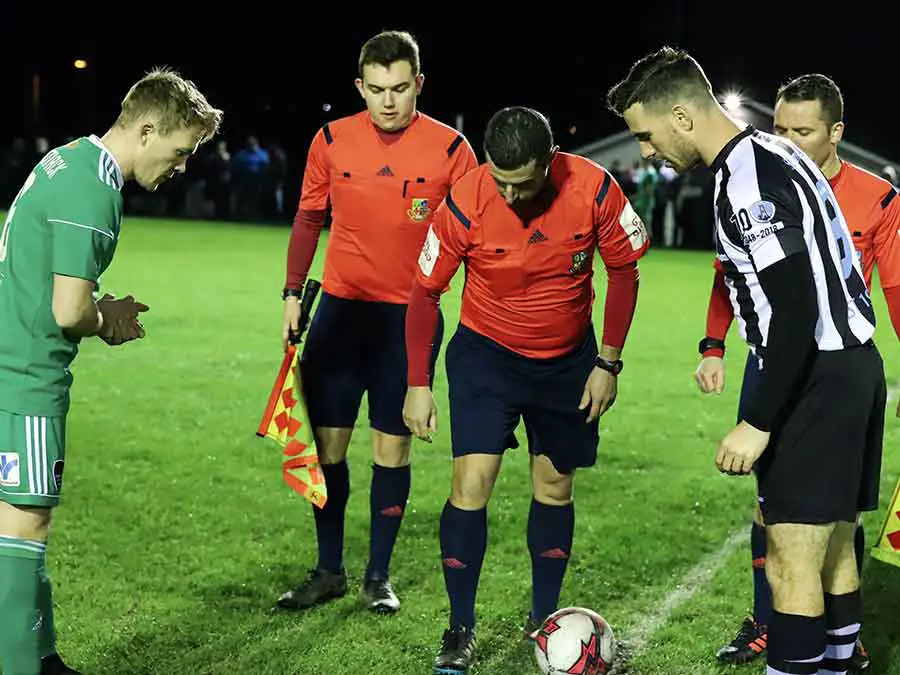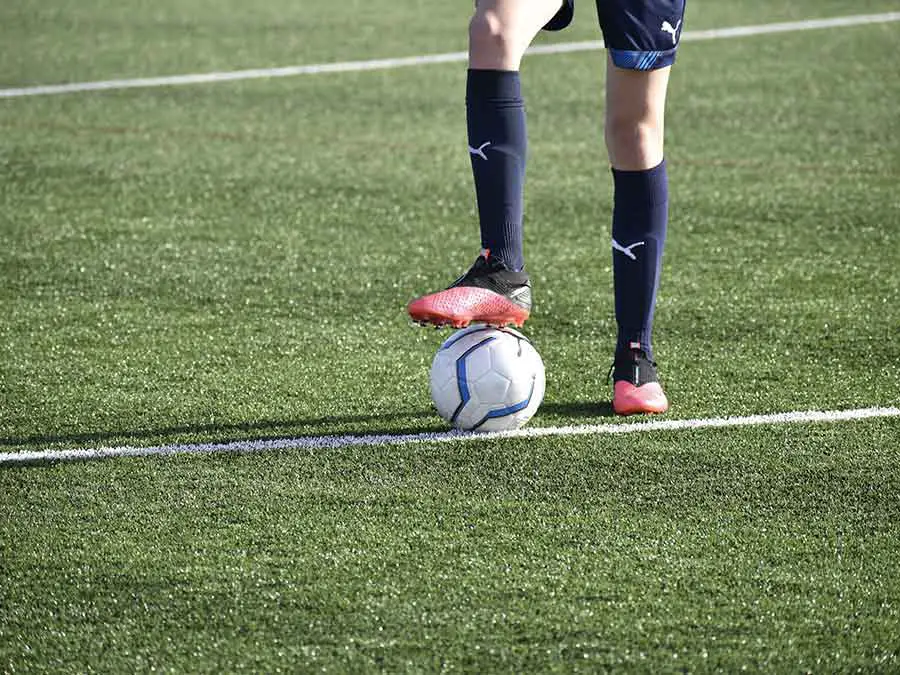How Does a Soccer Game Start?
Ahead of a game of soccer, the excitement may have been building for days, fans excitedly anticipating a closely-fought match between two very competitive teams, who may even be the bitterest of rivals.
But when the teams are out on the pitch, the fans have all got to their places inside the stadium, and all the pre-match formalities and entertainment are finished, the time comes for the contest to begin.
And in a game of soccer, this is done by way of a kick-off.
What is a kick-off in soccer?
This is the established way to start the game, as laid down in soccer’s rules. It is also used for the start of the second half, and to restart the game after a goal has been scored.
The kick-off will always be taken from the middle of the center circle on the pitch, and the game’s rules state that the ball must be passed to another player before the player who kicked off can touch it again.
If the player taking the kick-off touches the ball twice before one of their team-mates, this is an offence, and the referee should award an indirect free kick to the other team.
How is the team to kick-off a game of soccer first decided?
At the start of a soccer match, a coin toss takes place to decide which team will take the first kick-off. This coin toss is conducted by the referee, and tradition dictates that, like the kick-off itself, it takes place in the center circle of the pitch with the captains from each team, so that this part of proceedings is clearly seen by all the spectators.

The winning team’s captain has a choice between kicking off the match first or choosing the goal their team will attack first.
Other instances where a kick-off is needed are:
- At the start of the second half of play. This time, the team that didn’t kick off the first half will take the kick-off.
- After every goal scored the opposing team that conceded the goal regains possession and restarts the game with a kick-off from the center spot.
- If extra time is needed, the referee will conduct another coin toss, similar to the start of the match. Like normal time, extra time is also divided into two halves, with each one being started with a kick-off, and again, the teams do this in the same order as in the two halves of normal time.

If there is an interruption in play which had not resulted from one or other team committing a foul, or any of the reasons mentioned above – specifically if play is interrupted by a spectator/spectators running onto the pitch, or there is an injury to a player which was not the result of a foul by any player, then instead of a kick-off, the game is restarted by way of a drop ball.
In contrast to a kick-off, this can take place from anywhere on the pitch, and involves the referee dropping the ball vertically onto the field and one player from either team trying to touch and gain control of the ball first, once it has hit the ground.
What rules say how the kick-off should be conducted?
Officially, the referee must be happy that the ball is placed exactly on the center spot, and that all the players are in their own respective halves of the field, and ready for play to start.
At kick-off, the ball must be still. The referee will blow his whistle to signal that the game has started. Then once the ball has been kicked it is deemed to be in play, and the game is under way.
For many years, the game’s law stated that the ball had to be kicked forwards at the kick-off. This led to a typical kick-off consisting of two players from the team – usually starting the game standing close to one another, and the ball being passed a very short distance forwards from one to the other.

However, in 2016, the law was slightly changed, to say that it was no longer essential that the ball went forwards from kick-off. To allow for the possibility that many teams would choose to play the ball backwards at kick-off, it was also agreed that the player taking it could stand in his opponents’ half of the field.
Any two players from a team can be involved in taking a kick-off, but by virtue of their regular playing position in the middle of a team’s line of attackers, the number 9, or centre-forward, will invariably be one of those who takes a kick-off.
Can a goal be scored directly from a kick-off?
Provided the rule that the ball must be passed at least once at kick-off is satisfied, then yes, a goal can be scored in this way, that is, by the player to whom the ball is passed directly from the center-spot.
With all players in their correct positions on the field at the time of kick-off, however, this would be a very difficult, if not impossible feat to achieve.
However, a more common tactic, and one only slightly less direct, is said to have been pioneered by current English Premier League team A.F.C. Bournemouth, in a game in the Championship, the league’s second tier, in December 2021.
The ball was played backwards from the kick-off to a player standing on the edge of the center circle, as is common. But this time, another Bournemouth player had sprinted from inside his own half to the edge of opposing team Fulham’s penalty area. He received the ball from a first-time pass over the top of the Fulham defensive line, and was able to score within six seconds of the game starting.
He was deemed to be onside when he scored because the ball was played from inside his own half of the field, and at that time, although he was running very fast, he was in front of that defense line.
What Happens After The Game Has Kicked Off?
Once this has happened, the ball is deemed to be in play, provided it stays within the area marked by the touchlines and goal lines on the pitch.
So it is up to the team in possession immediately after this phase of the game to try to keep the ball, by means of one of their players dribbling with the ball, then passing it to a team-mate, and all the outfield players on that team running to try to find a space on the field into where the player with the ball can pass it and they can receive it.
The highly-structured format of the kick-off, and the rules which govern how it should be conducted, are in stark contrast to much of the rest of a game of soccer, when individual players’ and a team’s skills and creativity are instrumental in determining what then happens. It’s this degree of variation, and the fact that every individual player is also trying to contribute as a member of their team that together make soccer the fascinating and infinitely variable spectacle it is.
